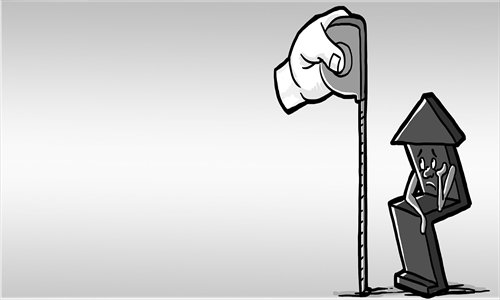Progress comes from spirit, not crunching vague numbers

Editor's Note:
A research project on China's national revival has drawn huge controversy. The project, chaired by Yang Yiyong, director of the Institute for Social Development under the National Development and Reform Commission, claimed that China had accomplished "62.74 percent" of its national revival by 2010. It wasn't just ordinary netizens poking fun online. People's Daily remarked on its microblog that the idea of such an index pales when negative news about social injustice prevails. Why did a positive project draw such a negative reaction? Exactly what went wrong? The Global Times invited two commentators to give their views.
A government-sponsored project has concluded that China had made it 62.74 percent of its way to national revival by 2010. But where did this strikingly precise figure come from, and what does it mean?
National revival has been a popular term in recent years. Giving that the country has been making efforts to recover the position China once held in the world, it may be generally correct to use this term to describe China's past development.
But using formulas and numbers to explain this rather broad and subjective concept and its progress doesn't seem to be appropriate.
Moreover, people may easily associate this project with all the other bizarre image projects funded by the government.
The concept of the national revival index itself is questionable. The index was calculated primarily based on the country's performance in the following criteria: overall national strength with an emphasis on economic development, developments in key areas such as education, technology and healthcare, the improvement of democracy, the legal system, environmental sustainability, and the unification of the nation and its contribution to world peace.
Some of these detailed subjects can be measured by numbers and figures. But I wonder whether these numbers are absolute or relative. And what were the reference points used in deciding these numbers?
My assumption is that the calculation has used some international parameters for reference, otherwise it wouldn't have produced such a miraculously precise percentage.
But this brought another question: Is it appropriate to use these parameters? Historically, China was often more advanced than the rest of the world. It has been estimated that China made up 30 percent of global GDP during the 18th century, much higher than that of US today. Chinese technology was some distance ahead of Europe until the Renaissance, but it is hardly likely to take such a lead today.
Besides, how was the calculation conducted in terms of more subjective subjects like democracy, or the rule of law? Were they calculated simply by comparing the contextual difference between China's policies and law and those of developed Western countries? And how much does each of the five listed criteria weigh deciding the final index?
Some argue that the unification of the country should be weighted most, and that before China can fully reclaim administration of its territory, even 30 percent is too much for rating its accomplishment in national revival. I do not necessarily agree with the argument, but they do cast a deep doubt on the figures concerning national rejuvenation.
When rating the revival of a nation, parameters of economic development are indeed important. But what's more significant is whether people are becoming more confident in their nation and their culture.
US President Barack Obama once said that China can never be the same as the West.
China's revival shouldn't be solely determined by comparing its numbers with the West, but by its own people's patriotism and cultural confidence. But these can barely be measured by numbers.
The author is a Beijing-based freelance writer. opinion@globaltimes.com.cn